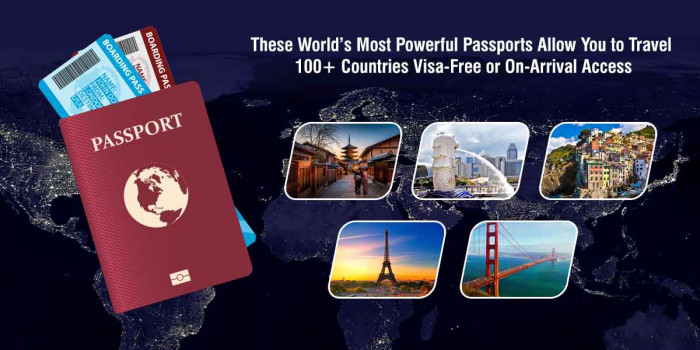20 Most Futuristic Cities In The World
What do you think about the future? Does it bring thrill in you or terrifies you? What’s your take on high speed trains, miles...

What do you think about the future? Does it bring thrill in you or terrifies you? What’s your take on high speed trains, miles high building, man-made island or transparency in government procedures? Whether you have fears for the future or you are a tech savvy, forward thinker, these futuristic cities are the best representations of what comes in the future.
In some cities like Dubai and Tokyo, the future seems stunning with the excellent architectures. Some other cities like ingenuously planned Curitiba or the data transparent Helsinki have made advancements in different ways.
In every case, they are directing the biggest predicaments that citizens, government, planners and architects are facing today. Accommodating booming populations, fostering the growth of businesses, technological innovation, transport management system and bringing transparency in government systems are some tasks that have been taken up by these cities. There is much more to see in the future.
Take a firsthand glimpse of the future by traveling to these cities. Here is the list.
20. Tokyo

imgsource= “phys”
Tokyo has always been first step ahead than the rest of the world whether it’s the high tech toilets or bullet trains. The capital city of Japan will also be hosting the 2020 Olympic Games. They are planning to create an athletes village in which ‘clean’ hydrogen power will generate all the heating and power for this village and the by-product of this process will only be water. This village will be a model for the smart and clean futuristic cities.
Some other technologies are also being mooted by 2020 such as robotic village. From carrying luggage to offer translation services, these gadgets will cater to all your needs. Tokyo games can also witness driverless taxis in mass. Japan’s mobile operators are developing a 5G wireless connection for the half million visitors. Even, fingerprint payments are on the way by 2020.
19. Hong Kong
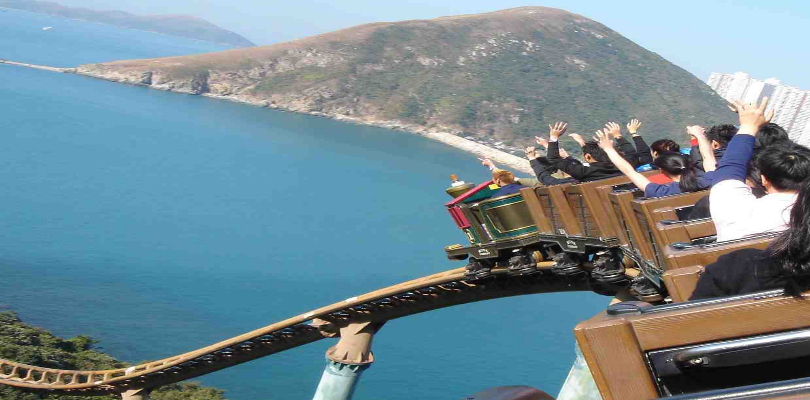
imgsource= “china-mike”
Hong Kong will soon turn Chinese metropolis into a model smart city. The city introduced a contactless smart card system called the Octopus, even before London’s Oyster card. From public transportation to parking meters and vending machines, the card can be used for everything. Their mission statement is ‘Making everyday life easier’.
It owns one of the highest technologies in the world such as smart identity scanners and fingerprint scanners. The city also has more skyscrapers than any other city in the world. Some of them like the Jockey Club Innovation Tower are truly gravity defying.
18. Singapore

imgsource= “20minutos”
‘Supertree Grove’ in Singapore is a huge and eco-friendly park made up of unique tree shaped structures which are 16 stories high. Apart from acting as a shade to visitors and residents, it absorbs heat and collects rain and solar energy. The city has committed to zero waste by the present mid century. It has also introduced a network of real time camera, GPS and sensors for tracking traffic and predicting jams. The disabled and elderly are given RFID (Radio frequency identification) cards that extend crossing times at traffic lights.
17. Brasilia
 imgsource= “blogspot”
imgsource= “blogspot”The capital of Brazil, Brasilia was built in the 1950’s from the scratch. It is a remarkably well planned set that looks like the set of a sci-fi movie. The city has also been named as the World Heritage Site by UNESCO. It is also called as a “landmark in the history of town planning”. Even those who do not appeal to the designs will get hold of the city’s spacey and futuristic feel.
16. Bangalore
 imgsource= “dreamvacationsindia”
imgsource= “dreamvacationsindia”The tech scene at the “Silicon Valley” of India makes the city highly futuristic. 20 years ago, the city was practically unheard of and today is one of the fastest growing cities in the world and the fastest growing wealth base in Asia Pacific. Bangalore is a hub of international wealth and tech talent.
15. Toronto
 imgsource= “amazonaws”
imgsource= “amazonaws”UNESCO has named Toronto as the most diverse city in the world. 49% of the residents are born outside Canada. People from different backgrounds and cultures congregate in this city. The city also boasts sleek architecture and a booming art scene.
14. Dubai
 imgsource= “orbitz”
imgsource= “orbitz”The glitzy Middle Eastern metropolis has a lot of futuristic architecture. It also has many forward thinking ambitions. Vice President and ruler Sheikh Mohammed bin Rashid Al Maktoum announced for a green economy in Dubai in 2012. This includes green buildings, sustainable energy and environmental tourism.
13. Rio De Janeiro
 imgsource= “rioluxuryapartments”
imgsource= “rioluxuryapartments”Rio made huge investments in infrastructure after the World Cup. It set up a centre of operations with IBM for the 2016 Olympics. The central command centre collected data from different departments of 30 cities like transportation, electricity and police. It also traced crimes and responded to real time events. The management system turned out to be so successful that Glasgow went on to set up such a center.
12. Barcelona
 imgsource= “gstatic”
imgsource= “gstatic”Barcelona is the most gorgeous city in Europe. The coastal beauty has brains with initiatives. Some of these include chargers at bus stops, LED street lights, open data system, interactive screens featuring visitor’s information and smart traffic lights that facilitates green corridors for fire vehicles.
11. Seoul
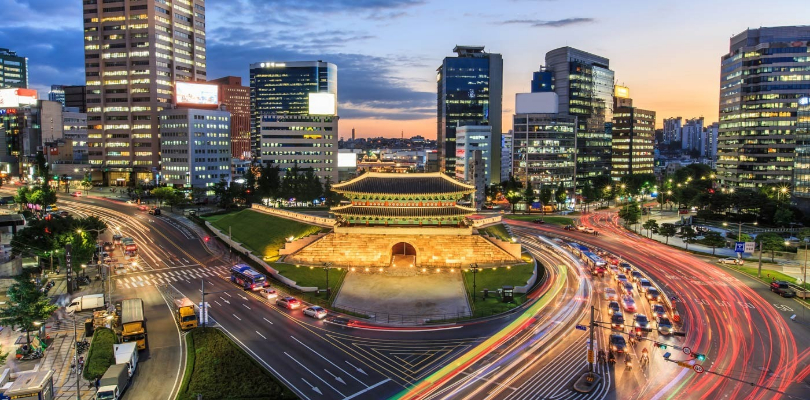 imgsource= “aarp”
imgsource= “aarp”Seoul is one of the most wired cities of the world. It ranks first in technology. The capital city of South Korea is also a huge metropolis. Consisting of modern skyscrapers, high tech surveys and pop culture, the city has various notable attractions. The science ministry of South Korea has announced the launch of 5G by 2020 which would be tested in Seoul.
There are more than 10,000 free Wi-Fi spots in the city. Seoul has also handed second hand smart phones to elderly, disabled and low income residents for advancements in public services.
10. Los Angeles
 imgsource= “traveler”
imgsource= “traveler”Los Angeles can be stated at position one for its exciting building designs. This city of Angels is also on its way to become the first metropolis on Earth to control street lighting through cloud based and mobile technologies. This reduces the efforts in maintenance while making the streets safer. It also enables to track the status of each light, control lighting fixtures and monitor energy usage.
9. London
 imgsource= “getyourguide”
imgsource= “getyourguide”The Oyster card for transportation was inspired from Hong Kong’s Octopus. London also introduced contactless payments through debit cards. For reducing traffic and emissions, they have congestion charges and cycle hire schemes. Driverless trains are in process. They have Wi-Fi at most tube stations.
Also, for keeping track of London’s activities, the mayor has a City Dashboard which can also be viewed by us. It shows everything about London from weather to the mood map based on tweets.
8. Songdo International Business District
 imgsource= “galeintl”
imgsource= “galeintl”Songdo IBD is a ubiquitous city built from scratch to smart. It is built on 1500 acres of land. The city embraces smart thinking through charging stations for electric cars, waste management system and reserving 40% land for green space.
7. Helsinki
 imgsource= “fashionista”
imgsource= “fashionista”Finland’s capital is an excellent example of data transparency. Municipal trends are making their statistical data available on the internet. Meetings, agendas and decisions of the government are visible to everyone. It has a city wide free Wi-Fi. They aim to get rid of private car ownership by 2025 for encouraging walking by encouraging the use of apps and other means. BlindSquare is an app that helps blind people in navigation. Helsinki will soon be integrating the app with local bus timetables.
6. Boston
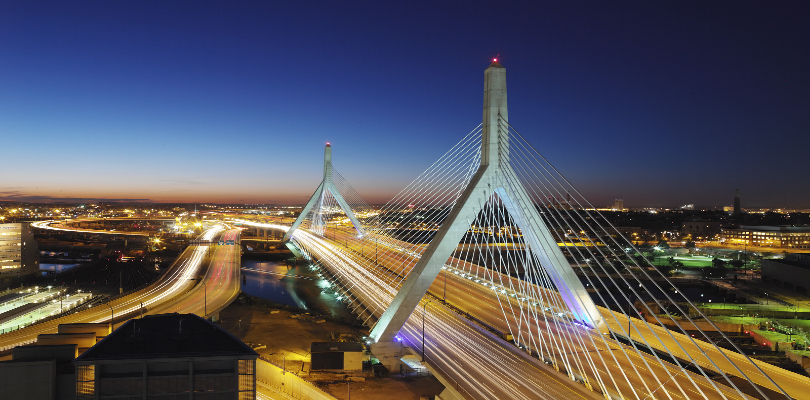 imgsource= “ssl”
imgsource= “ssl”One of the initial cities in America to try Shotspotter was Boston. Shotspotter is a new technology for detecting gunfire. It can instantly point out whenever a gun is fired.
The notification is automatically sent to the police. This can police to deter the crime even before it begins. Boston has an award winning Citizen’s Connect smartphone app where the residents can inform the Public Service Department about potholes, graffiti or other problems. And not to mention, it is also a home for MIT, the place where next big technological development would be happening.
5. Curitiba
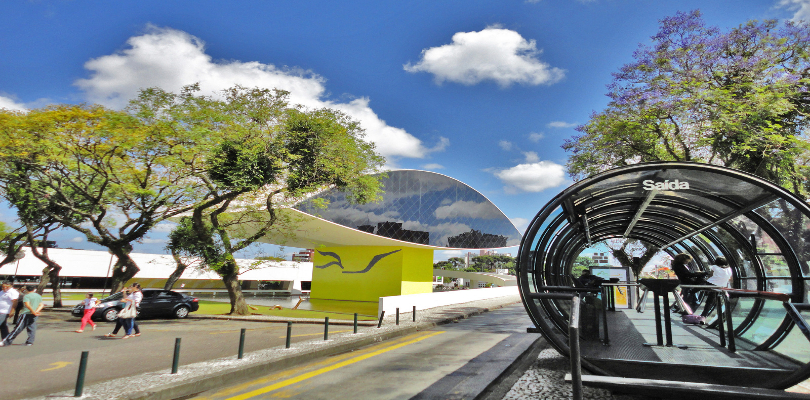 imgsource= “brazilianexperience”
imgsource= “brazilianexperience”Curitiba is the eighth largest city in Brazil. It was the 2014 FIFA World Cup. With a population of nearly two million, the city has gone popular for eco-consciousness and ingenious planning. The city has earned a Global Award for sustainability in 2010. Its efficient transportation system is a model for the developing countries which also earned it an honor from UNESCO.
4. Shanghai
 imgsource= “amazonaws”
imgsource= “amazonaws”Shanghai is the first city in the world to build world’s fastest commercial trains. These Maglev trains float on magnets above the tracks hitting speeds up to 268 mph. Being a leader in the future of travel, the city also wins the prize for most architectural skyscrapers in the world.
3. Amsterdam
 imgsource= “orbitz”
imgsource= “orbitz”Amsterdam built world’s first floating neighborhood. These water based buildings in IJburg district homes are a home to 1,000 residents. They look forward to expand this number while also preparing for the rising sea level. The city has lots of technology for making the lives of its people easier including systems that display vacant seats on commuter trains. They are also working on The Smart Work project which aims to improve commutes and emissions in co-working spaces.
2. Masdar
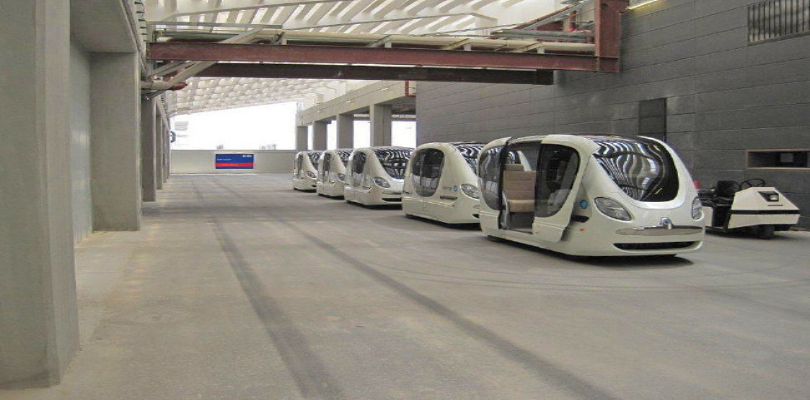 imgsource= “2getthere”
imgsource= “2getthere”Masdar is a potential cleantech hub being built outside near Abu Dhabi. The city might become world’s first zero carbon and zero waste city. The city is being designed on the principle of archeology (archaeology and ecology) by a British architectural firm. The buildings are shaped in such a way that they draw air inside the city for keeping it cool. Streets are designed for cycling and walking. Public transport will include driverless pod cars and other electric transport systems.
1.A floating future city
 imgsource= “fredericjoignot”
imgsource= “fredericjoignot”A British and Chinese based firm called AT Design Office has developed a concept for the floating future city. This will be a sustainable alternative to land based cities and for coping up with the demands of global population. This futuristic ocean city would be using the same technologies that were used in building the 31 mile long bridge connecting Hong Kong, Macau and Zhuhai.
The objective is to stay as green as possible. The city comprises of hexagonal modules present both above water and underwater. Submarines will be used through interwoven canals to transport around the island. Various big ships will be available for the connection with the outside world.
Popular Posts
10 Amazing Cities Built Near or Through Rivers
Rivers have been crucial to human settlements, commercialization, and building cities. This opens opportunities for trading goods and establishing international connections.
Kimberly Campbell
Mystery Of Baigong Pipes - 1,50,000 Old Construction Reveals The Ancient Technology
Baigong pipes are a series of ancient pipes found in and near Mount Baigong located about 40-45 km southwest of the city of Deli...
Kevin Green
Havasupai Falls, Arizona | Facts & Information For Hiking
Have you ever seen blue-green waterfalls? Hidden in the Grand Canyon, Havasupai Falls Arizona is an exotic destination and a par...
Kevin Green






